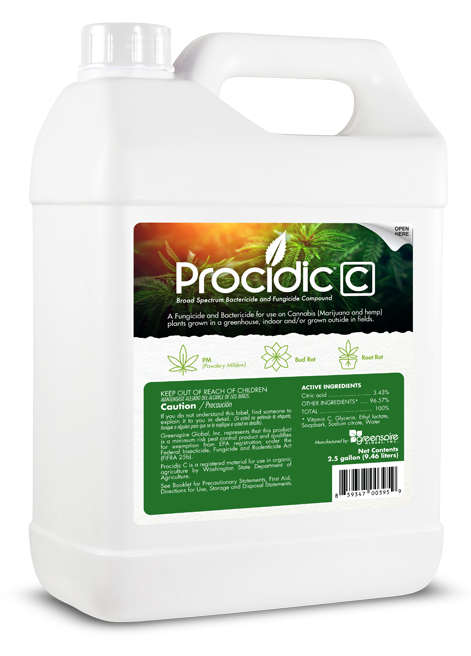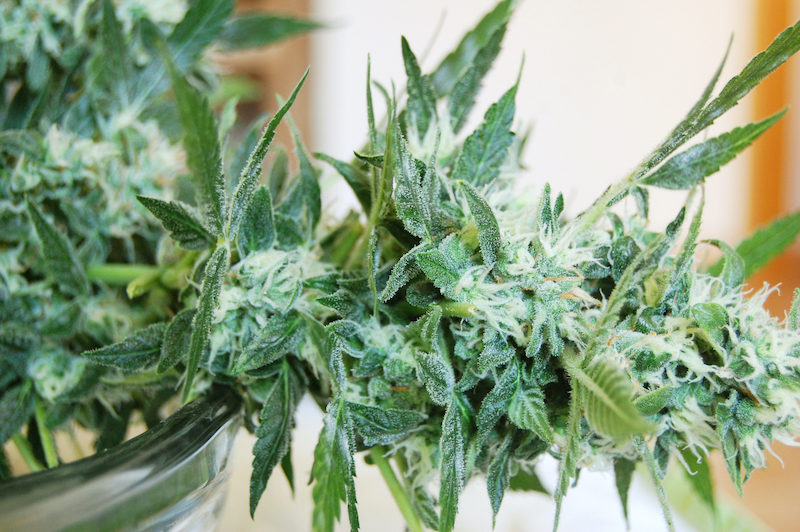Every day, the health of your plants is threatened by environmental and disease stresses. One of the most common ailments for plants is a fungal pathogen called powdery mildew. Different species of this disease affect specific types of plants. For cannabis and hemp, it is a strain known as white powdery mildew (WPM). The Greenspire Global team will highlight what you need to know about WPM and how to manage it with Procidic-C, an industry-leading fungicide and bactericide spray from Greenspire Global.
What Is White Powdery Mildew?There are a wide variety of powdery mildew species. The one that affects cannabis is known scientifically as Podosphaera macularis. Spores transmit WPM through the wind, soil, and water. Once a plant is infected, a layer of mildew and spores begins to build on the leaves. These spores can be transferred to surrounding plants by air currents. This disease is one of the easier ones to identify due to the particular symptoms it causes plants to display, which includes the following:
- White and pale-colored patches on leaves, stems, and buds (flour-like appearance)
- Patches begin as small circles
- Wilting or drooping leaves
- Young leaves can be distorted, stunted, and discolored
WPM can cause significant damage to the plants if the infection begins early-on in the growing season. Mildew coverage can have adverse effects on flowering, yields, bud quality, and overall plant health. Overall, left unchecked, the fungus can reduce the ability of cannabis to go through photosynthesis.
What Causes The Disease?Several factors lead to the spread of powdery mildew. Depending on the environment the cannabis plants are being cultivated in, either in a greenhouse or in a field, some of the disease catalysts can be controlled. However, WPM is a very hearty pathogen with specific survival structures that allow it to survive on dead plant material and in the soil after the growing season is over. When the conditions are right, the disease cycle begins again. What causes the emergence of the disease includes the following factors:
- High humidity environments (>95%)
- Moderate temperatures of 65 to 70 degrees F
- Minimal airflow allows WPM spores to settle on leaves
- Poor ventilation in interior spaces create an environment for the disease to infect plants
- Leaf-on-leaf contact
- Cultural practices and cross contamination
The most effective way of managing WPM is by taking preventative action. Growers can use fungicides to prevent and take care of the problem. Procidic-C is a specially formulated broad-spectrum fungicide and bactericide for cannabis and hemp plants, whether the plants are grown outside or in greenhouses. Procidic-C is registered for organic agriculture under the Washington State Department of Agriculture Organic Program. The spray can be used up to the day of harvest and does not require a re-entry waiting period.
Ideally, Procidic-C should be used as a preventative, but If your crop is already infected with WPM, it can also be used for curative applications. Utilizing this spray can be successful in eliminating the disease if used before week six of flowering.
For more information about Procidic-C and other proven fungicide and bactericide solutions, visit GreenspireGlobal.com.
About Greenspire GlobalGreenspire Global is an innovative input company that develops, manufactures, and distributes diverse products for agricultural, commercial, and residential applications. With an established line of alternative solutions to harsh, toxic synthetic chemicals, Greenspire Global aims to help growers bolster crop health while achieving better yields.



